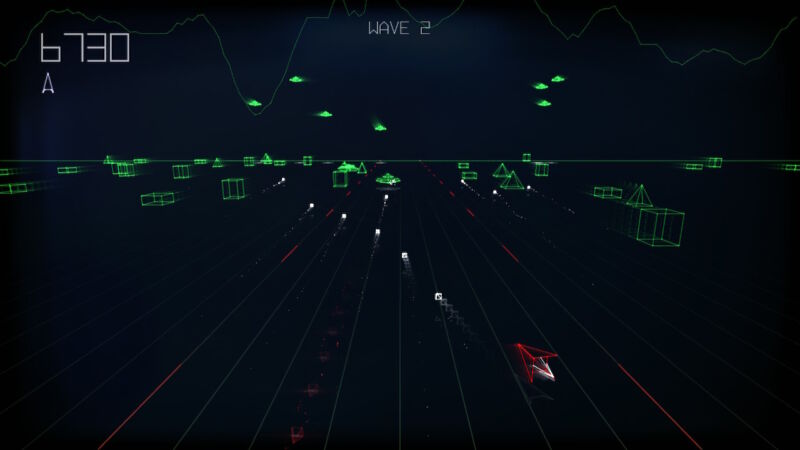
As a package, Atari 50: The Anniversary Collection sets a new high-water mark for retro video game compilations. The collection's "timeline" feature deftly weaves archival materials like design documents and manuals, explanatory context and contemporary quotes from the game's release, and new video interviews with game creators into an engaging, interactive trip through gaming history.
But while the presentation shines, the games contained within Atari 50 often don't. Sure, there are a few truly replayable classics on offer here, especially in the games from Atari's glorious arcade era. That said, the bulk of Atari 50's selection of over 100 titles feels like filler that just doesn't hold up from a modern game design perspective. Dozens of "classic" Atari games—from 3-D Tic-Tac-Toe on the Atari 2600 to Missile Command 3D on the Jaguar—boil down to mere historical curiosities that most modern players would be hard-pressed to tolerate for longer than a couple of minutes.
Then there's Vctr Sctr, one of a handful of "reimagined" games on Atari 50 that attempt to re-create the feel of a classic Atari title with modern hardware and design touches. It's a game I've gravitated toward constantly in the last few days for the kind of easy-to-pick-up, hard-to-put-down high-score chase that I haven't experienced in quite the same way since Geometry Wars.
Emulating a dead display technology
In contrast to most arcade games of the '70s and '80s—which were characterized by blocky, pixellated graphics—vector games like Asteroids or Major Havoc featured sharp, crisp lines that smoothly animated in easily scalable and functionally infinite resolutions. But those advantages came at a price—the simple lines created "hollow" looking wireframe characters and objects, and early vector displays could only display a single color (four-color vector games would come later).
The glowing, precise lines of vector displays were also nearly impossible to re-create on standard-definition CRT TVs of the '70s and '80s. If you wanted the vector experience at home, you had to invest in expensive flops like the Vectrex, which had built-in vector monitors.
Capturing the unique glow of Atari's classic vector games was a priority for the developers of Atari 50. "We tried our best to emulate the look [of a classic vector monitor]," Digital Eclipse engineer and Vctr Sctr designer Jeremy Williams told Ars. "We really cared about that a lot... It's all drawn in an 'additive mode' so it really does look as much like a vector display as we could."
That quest for vector authenticity includes little touches like emulating the "phosphor effect" that leads to blurry after-images that persist on the display for a split second after a vector line disappears. Williams said he also went to the trouble to calculate the subtle ghostly "bloom" that flickers around individual vector monitor lines (and pulses compellingly with the bass-heavy soundtrack, in Vctr Sctr's case).
Even issues that were considered imperfections on vector displays of the day were important to capture for this reimagining, Williams said. "Depending on whether or not your vector display is really dialed in, you can get a little bit of movement for all the lines," he said. "So every line is kind of moving a little bit, every line is independently flickering."
reader comments
76